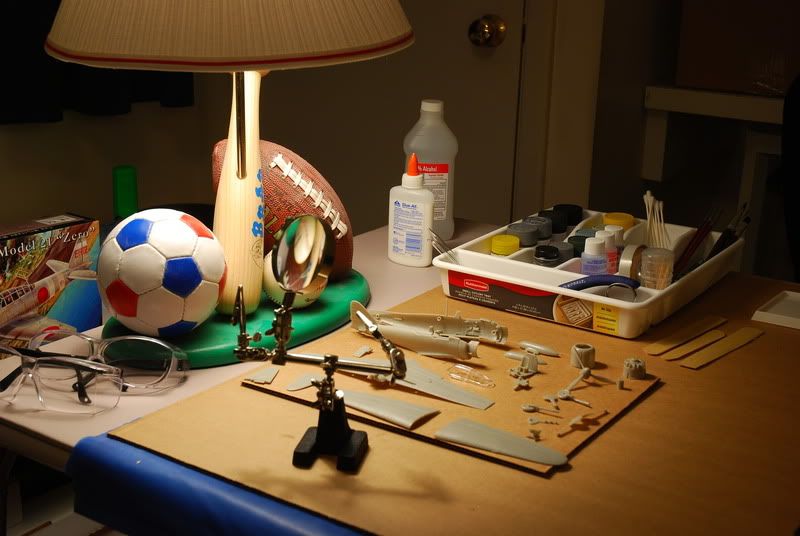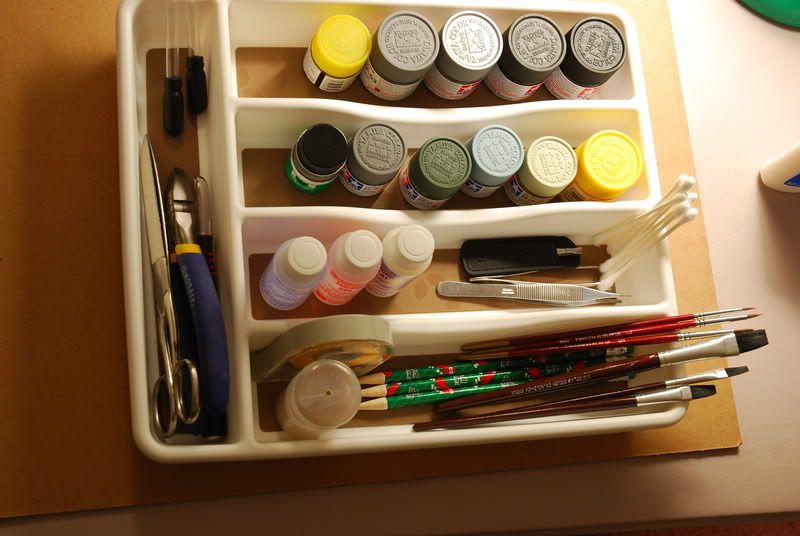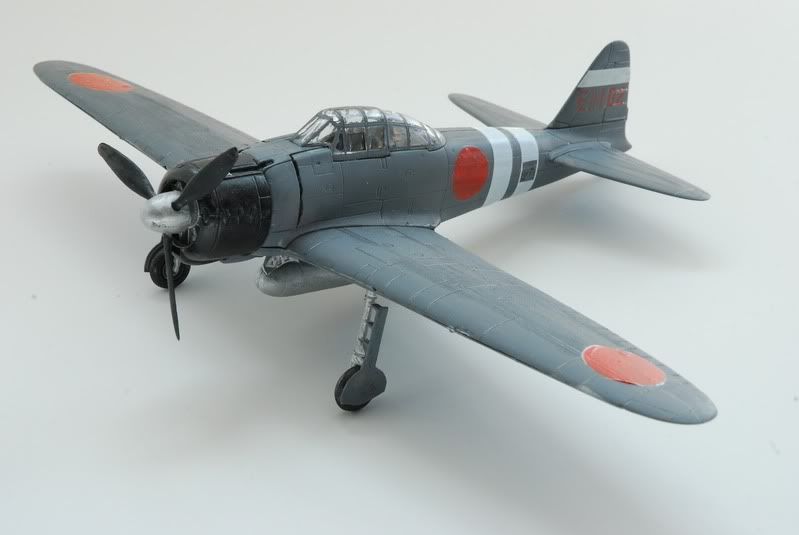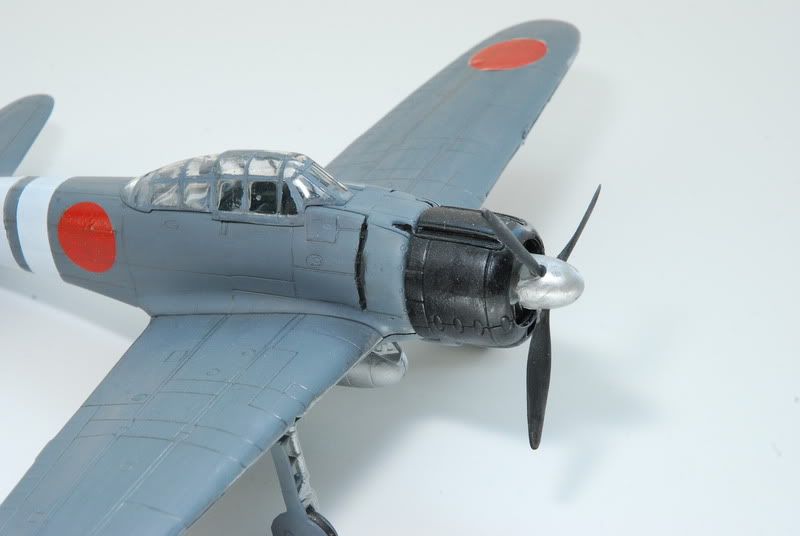A simple wash/ink wash will make the panel lines pop out more and leading edges, cowlings and prop chip marks are easy to do with a pin brush and some basic alum colored paint. another easy one taking random panels and making them a tad darker than the surrounding ones to show replacement in the fieldshop by the handlers.
important thing about weathering is a little goes a long way. Don't feel you need to over-indulge, you are modelling a in-service piece of hardware and not a relic for the norm..although that can be reversed

I like the lived in look, but not the on the way to the junk-pile weathering I've seen here on some customs...or FOV's normal dip in thinned black a few times and it's Collector's grade realism piece.

Subtle is good, Subtle works. Other than those points not bad for a first time with a brush. For the next one I suggest a primer, and thinner coats of brush applied paint..and a wide selection of brush sizes and types..heck I have 20$(I think 25-27 is the most I've paid, but I love to hit the sales) ones from Michael's and packs of cheapos from Walmart that all have been found to have a niche use...also when it comes to tools always think outside the box, if it works it's not wrong IMO.
Also for the canopy, I can think of two easy bits of advice. Model master's Clear parts glue, great stuff for the simple reason unlike every other glue, it doesn't cloud clear plastic. And also if you dip the canopy in Future Floor polish, which is a acrylic floor wax(protector actually) it will enhance the clarity. And the only other thing I can say about greenhouses on planes, masking tape, #11 Xacto, time and a steady hand(or if you can find them the pre-cut mask

) def show results. I thinking masking canopies is prob why I gave up 1/72 planes for a long time for 1:32 planes and armour.
sorry if that is a ramble, still tired from easter dinner and trying to get some stuff ready for the shuttle launch this morning.








